Koji: The Mold You Want In Your Kitchen
17:19 minutes
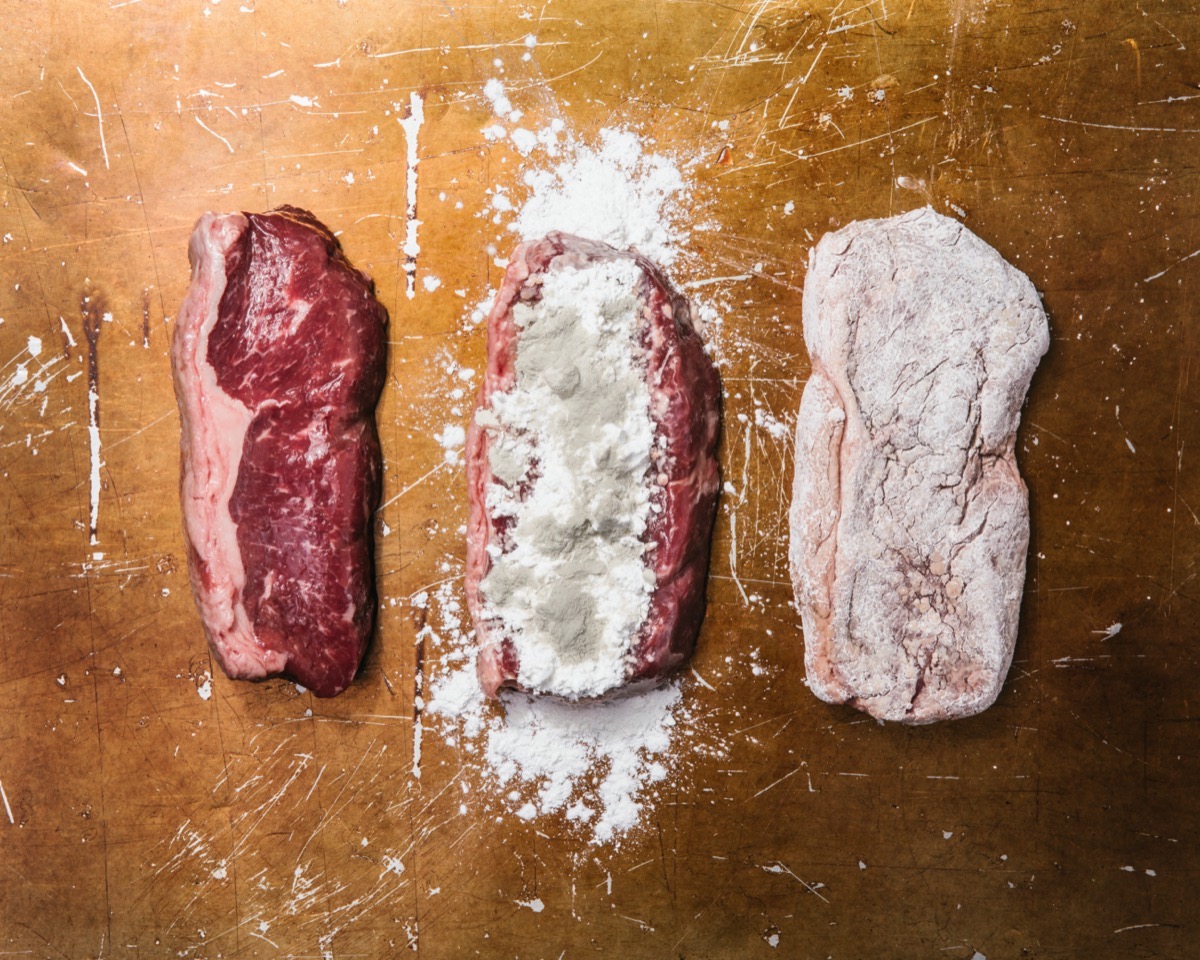
When chef Jeremy Umansky grows a batch of Aspergillus oryzae, a cultured mold also known as koji, in a tray of rice, he says he’s “bewitched” by its fluffy white texture and tantalizing floral smells. When professional mechanical engineer and koji explorer Rich Shih thinks about the versatility of koji, from traditional Japanese sake to cured meats, he says, “It blows my mind.”
Koji-inoculated starches are crucial in centuries-old Asian foods like soy sauce and miso—and, now, inspiring new and creative twists from modern culinary minds.
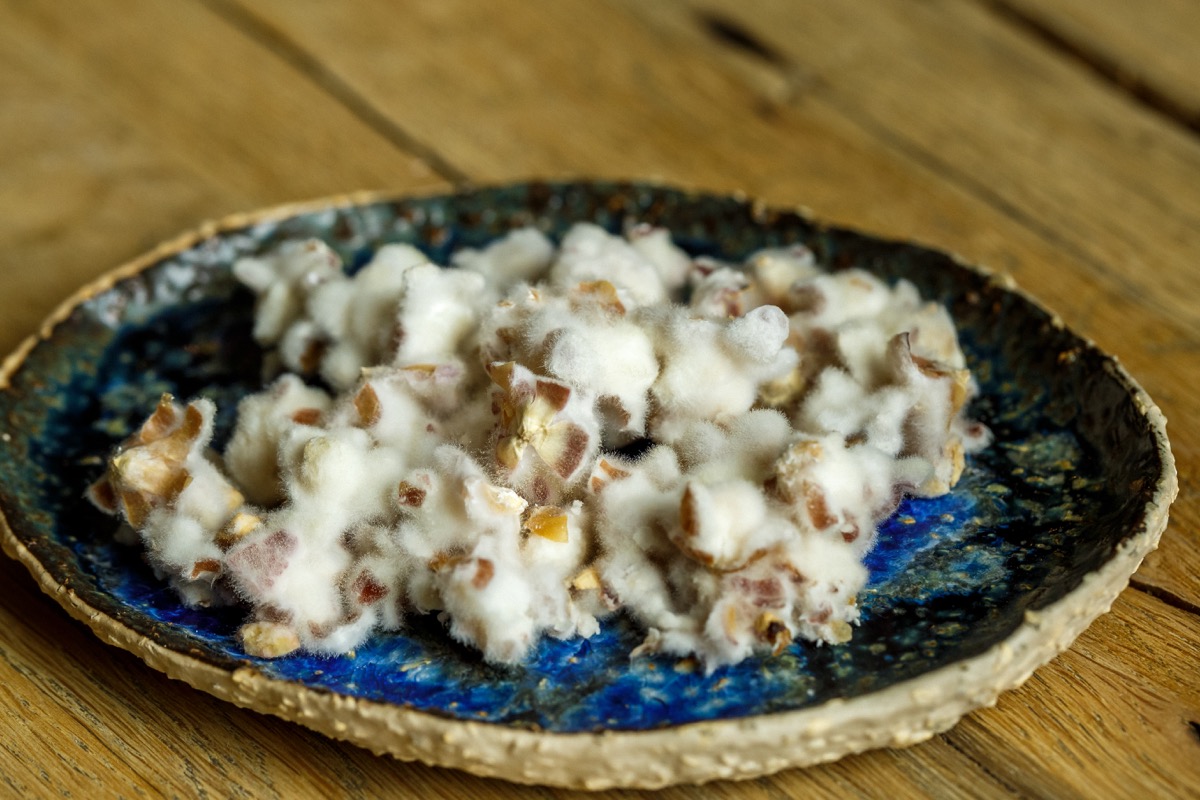
And Shih and Umansky, the two food fanatics, have written a new book describing the near-magical workings of the fungus, which, like other molds, uses enzymes to break starches, fats, and proteins down into food for itself. It just so happens that, in the process, it’s making our food tastier. (Check out a recipe for amazake, the foundation of sake and rice-based drinks, in an excerpt of Shih and Umansky’s book Koji Alchemy.)
You can grow koji on grains, vegetables, and other starchy foods, and make sauces, pastes, alcohols, and vinegars. Even cure meats. Umansky and Shih say the possibilities are endless—and they have the koji pastrami and umami popcorn to prove it.
Are you ready to bring the culinary world of koji into your kitchen? Umansky and Shih have even more ideas for how you can harness this useful mold to enhance recipes and make use of your food scraps.
“You can take what some people consider a waste product and bring that to life with these microbes,” Rich Shih tells SciFri over the phone. “You can change the level of nutrition and preserve it for a period of time.”
SciFri caught up with Umansky and Shih this November to get their favorite koji-inspired holiday dishes and leftover recipes—from turkey amino spreads to cranberry sauce amazake to soy sauce-infused whipped cream.
One of the dishes Umansky makes all the time at Larder Delicatessen and Bakery in Cleveland is his signature matzo ball soup. After he makes the chicken stock for the soup, he’s left with flavor-soaked bones and vegetables. Some people compost the remains, but most just throw it away, he says. Instead, Umansky takes all the steeped leftovers—even some of the smaller bones—grinds them, and mixes in koji and salt. What you get is a meaty, sumptuous amino paste.
“We call it Jewish penicillin,” Umansky says. You can use the amino paste as an instant soup base or as a rub for a roasted whole chicken. “I like it with cream cheese as a spread, kind of like rillettes.”
The liquid that forms on the top of the paste can be like a soy sauce or tamari, but full of rich, meaty flavor. You can sauté with it or drizzle some over roasted vegetables. Plus, the paste has a good shelf life. You can apply this method with other types of soup leftovers—including the soup that many people make with leftover Thanksgiving turkey bones, he says.
“Being able to take these turkey leftovers and transform them in this way is pretty simple and straightforward,” he says.
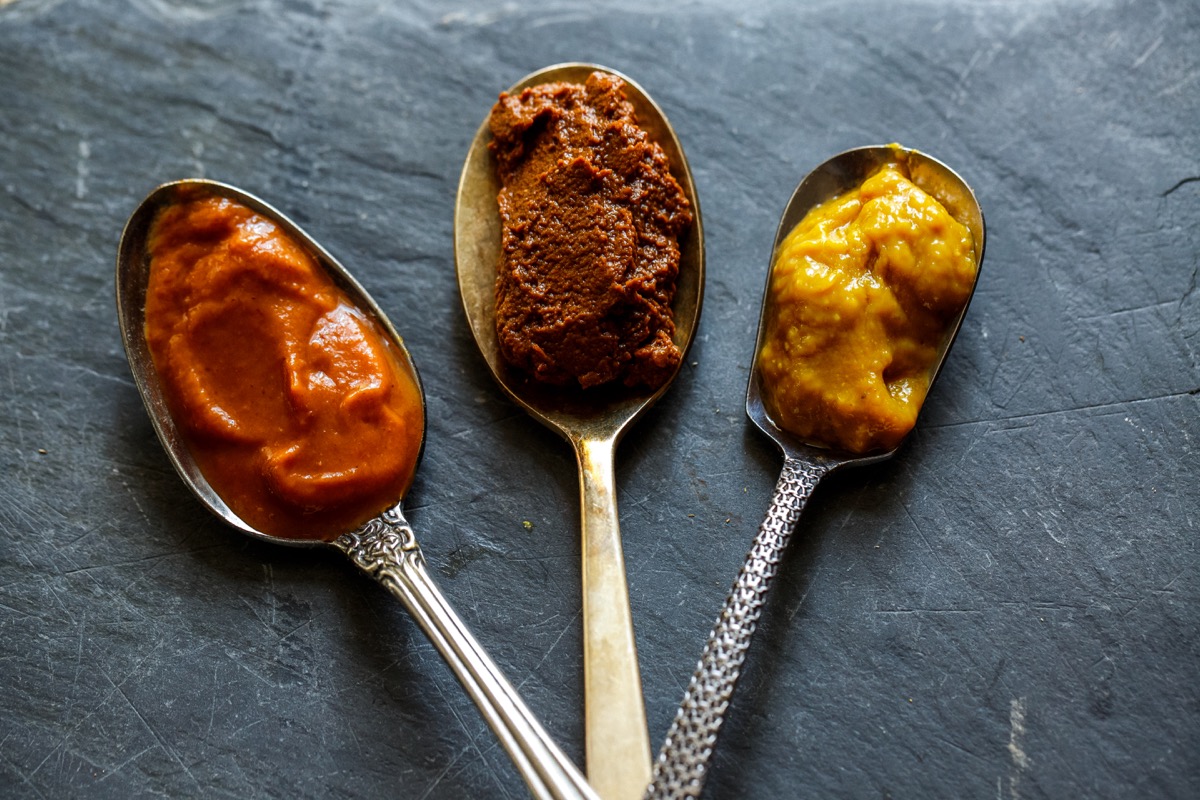
You can also make amino pastes and sauces, like a soy sauce or miso, with leftover stuffing. Stuffing is packed with carbohydrates that the mold loves to munch on, Umansky explains. Sprinkle some spores on your stuffing, and let the koji grow, he says. Add some salt to create the amino paste, or add a little water to get more of a sauce. “Then whenever you get a little craving for stuffing, you can just add its concentrated flavor [as a paste] to something and not have to worry about cooking a huge batch of it or having to deal with the leftovers,” he says. “You can enjoy it for months or potentially even years to come.”
When it comes to cranberry sauce (a highly divisive Thanksgiving side dish), many might slowly graze away at the tub of the leftovers by spreading a little on a sandwich or spooning some on top of yogurt. But Umansky proposes a different use: make amazake.
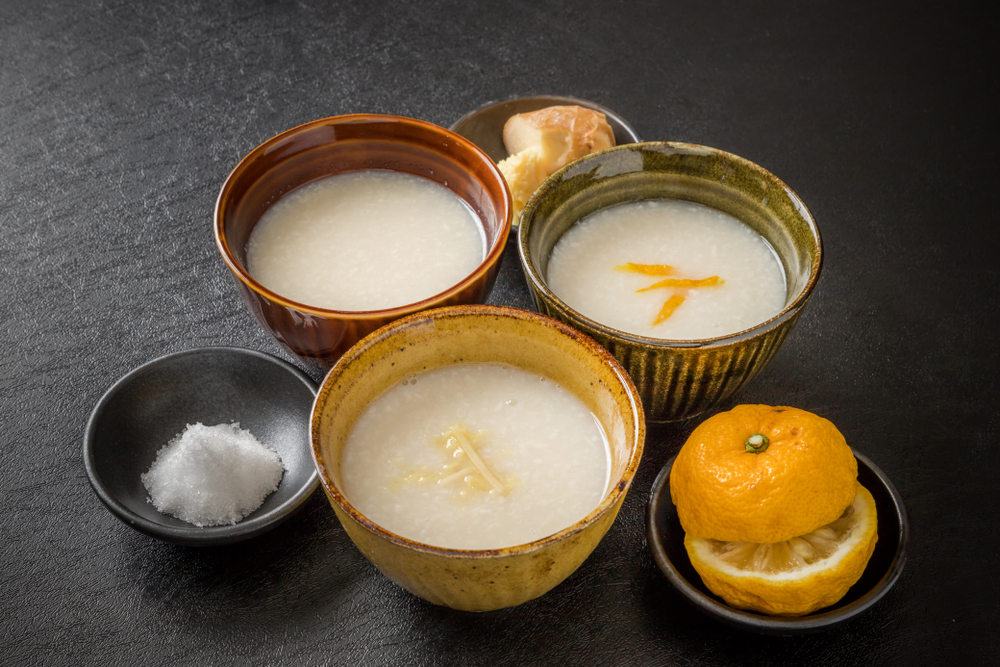
“Take your cranberry sauce, mix it with some koji rice and a little bit of water, and you have an amazake,” he says. Your bright red side dish is now transformed into a delectable sweet porridge. The porridge is infused with the cranberry, or (depending on how you prepare your cranberry sauce) a hint of orange or apple or other fruits and spices. “That would just be good in various sweet applications. Spoon some over fresh fruit or top a crème brûlée with it.” Read a full step-by-step guide to making sweet and sour amazake in this excerpt of Koji Alchemy by Shih and Umanksy.
You can even go a step further and make sake, Umansky says. All you need is some yeast to ferment the amazake into the rice-based alcohol. “If fermented from the Friday after Thanksgiving until the day before Christmas, you could end up with a nice bottle of booze to give somebody.”
You might not be quite ready to grow your own koji at home, and that’s OK. That doesn’t mean you still can’t experiment with the flavors, says Shih. Koji-made products are easily found at many local markets—stock up on some soy sauce, gochujang, miso, or any fermented soybean paste.
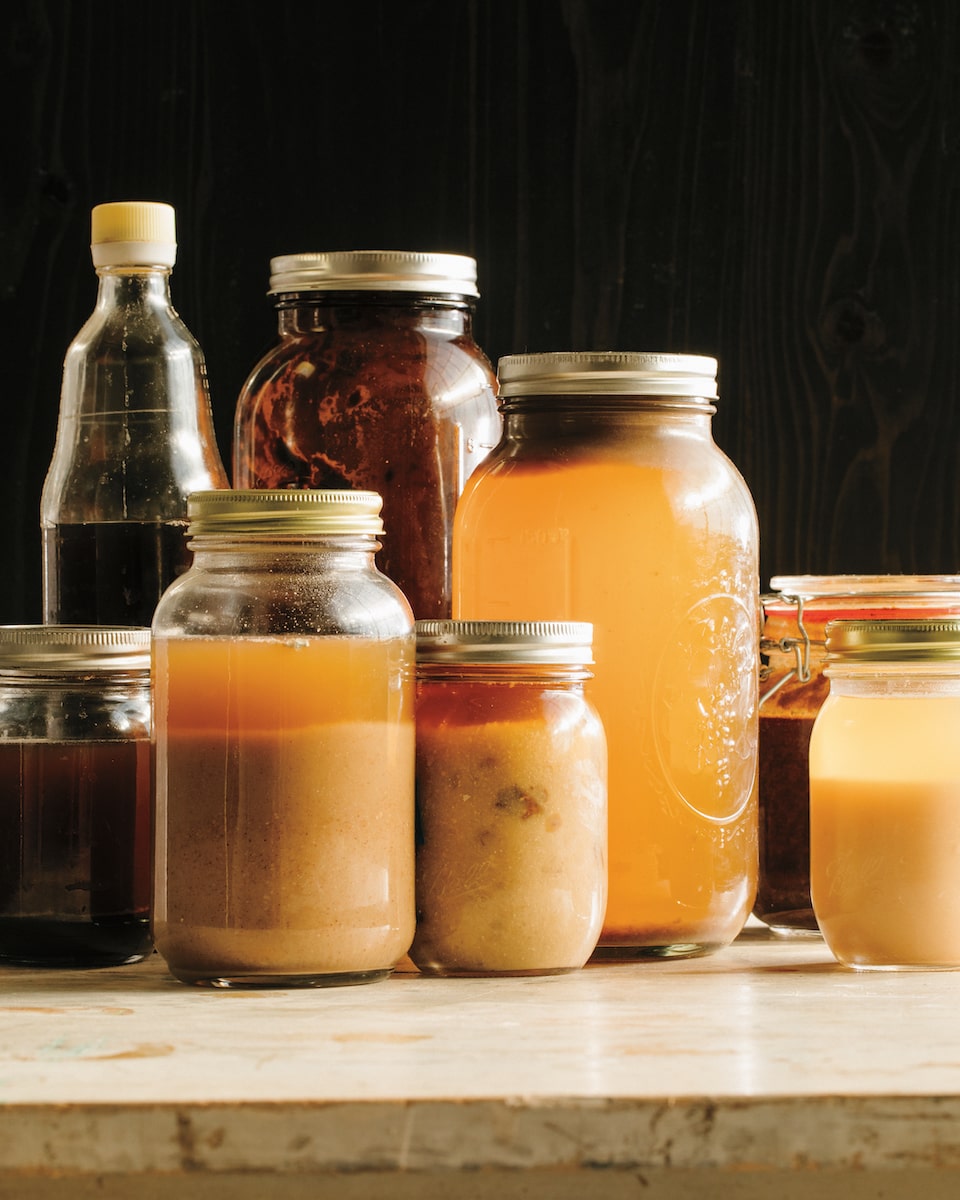
“There are all kinds of products that are made with koji that people can play around with,” Shih says. “You can easily take your cranberry sauce, cook it with a little bit of miso, chop up some apples and add some onions and make it into a sort of chutney—convert things into something that’s savory and sweet at the same time.”
Shih also recommends adding a dash of gochujang to some butter to add an acidic, spicy kick to your spread. Many koji products can also be great substitutions in recipes. Umansky says that you can use rice vinegar instead of apple cider vinegar or balsamic vinegar, for instance. Any recipe that calls for white wine can be swapped with sake, too, he says.
“Try using sake because the natural flavor of koji has this sweet, floral fruitiness that you get when it’s just growing on the rice or beans or food substrate,” he says. “That flavor is most apparent in the alcohols made from koji. So if you want to get like this really cool, floral, fruity, sweet flavor and aroma, go ahead and swap out white wine for sake in a recipe.”
“We can always talk about soy sauce, because pretty much everybody in the world can get soy sauce,” says Shih. While you might typically put it in your savory dishes, try mixing it into your dessert recipes, he says. “Try putting a little in some whipped cream, or add it to your filling for an apple pie, or into a streusel,” Shih says. You can even splash some into an old fashioned, he says.
“You add this little touch of something that you don’t know quite why you like it, but it’s just that quality that really brightens up that level of flavor,” he says. “Really nothing else is able to amplify in that fashion.”
Note: From a food safety standpoint working with koji to make amino pastes, amino sauces, shio koji or amazake is no different than making sauerkraut or kimchi. Keep your hands, utensils, ingredients, and work surfaces clean and, as with any fermented food, use the prescribed amount of salt if called for, which allows beneficial microbes to thrive and helps keep pathogens away.
Invest in quality science journalism by making a donation to Science Friday.
Rich Shih is an exhibit engineer at the Museum of Food and Drink and co-author of Koji Alchemy: Rediscovering the Magic of Mold-Based Fermentation (Chelsea Green, 2020). He’s based in New York, New York.
Jeremy Umansky is co-owner and co-chef of the Larder Delicatessen and Bakery, and co-author of Koji Alchemy: Rediscovering the Magic of Mold-Based Fermentation (Chelsea Green, 2020). He’s based in Cleveland, Ohio.
IRA FLATOW: This is Science Friday. I’m Ira Flatow. If anything is certain in this stay at home pandemic, it’s that people are cooking– like these listeners who called us to share their proud creations.
MORGAN: Since the onset of the pandemic I’ve brewed three big batches of kombucha using a variety of teas– chai, assam and white. I’ve grown oyster mushrooms from a mail ordered bag of mycelium spawn and fermented two jars of sauerkraut.
CAMILLE: Through this quarantine I’ve done a lot of bread baking and a lot of fermenting. I recently made a sauerkraut with red cabbage, beets, and carrots and it was really, really good. And I have a whole bunch of ginger that I accidentally bought too much of. So now I’m going to make a fermented ginger paste and see how that works.
TANYA: So I made dandelion jam pesto from the chickweed and dead nettle in my yard I’ve been brewing kombucha. I’m trying to make phos I’ve been using a mesophilic yogurt starter to make my own yogurt. It’s really been great fun and a good way to pass time.
IRA FLATOW: Those were the voices of Morgan from Portland, Camille and Tanya from Arkansas. Thank you for your submissions to this Science Friday VoxPop app. Maybe you’ve already done the sourdough, or the pickles, or the yogurt, right? My next guests have the perfect next step for you. It’s called koji. It’s a white fuzzy mold and it smells like fruit.
And we can thank it for a splendid array of foods from East Asian cultures, including soy sauce, miso, and saki. And my next guests want you to join in, to make culinary delights with the help of this magical mold, even beyond the traditional uses. Think koji charcuterie or miso peanut butter. Here to talk more about the transformation power of aspergillus or oryzae are my guests the co-authors of the book, Koji Alchemy.
Rich Shih is a mechanical engineer by day and the exhibit engineer for NYC’s Museum of Food and Drink. And Jeremy Umansky is a co-chef and co-owner of Larder Delicatessen and Bakery in Cleveland, Ohio. Welcome to Science Friday.
RICH SHIH: Thanks for having us on.
JEREMY UMANSKY: Thank you.
IRA FLATOW: I know I’ve already given the overview that koji is a mold and that it’s been used for thousands of years. But please, you’ve got to sell me on the idea of using a mold to make food. Jeremy, why is this so delicious.
JEREMY UMANSKY: Well, one thing to keep in mind is you’re already eating this mold in one way, shape, or form. I’m willing to bet that virtually every listener today has some soy sauce in their house, whether it’s a bottle of it or a little packet from Chinese takeout. And that soy sauce cannot be made without this mold. So we already have it in our lives.
We already eat so many different fermented foods that rely on molds– things like cheeses and charcuterie. We can lump yeast into that. They’re both types of fungi– so bread. It already exists there. So using it to make foods more delicious is pretty simple and straightforward.
IRA FLATOW: And is it the rice that we’re really cooking with it, right?
JEREMY UMANSKY: Exactly, you can’t just take the spores of the mold and make something delicious. You have to get it to grow first. So you grow it on rice, or barley, or actually any starchy substrate. So it could be wheat berries. It could be rye. It could be hominy.
IRA FLATOW: Give me an idea what it looks like. I’ve seen photos, it looks very pretty growing there on the rice.
JEREMY UMANSKY: It’s I think pretty is a lackluster word Ira. It is sultry and stunning. I mean, it’s sultry and stunning. It really is– you look at it and you get lost in it. It is just so white and fuzzy and fluffy. It’s inviting. Almost like– you look at a picture of a sky with beautiful like cumulus clouds in it and that just makes you relax and feel at home. And it just, oh, I could hug one of those clouds or I can lay down on it and take a nap.
Koji has that same effect on you when you grow it and it’s growing fresh. And then you throw its aroma on top of that, which its aroma is green apple and champagne and honeysuckle– tropical fruit like mango and pineapple with a little bit of mushroominess there. Some people even say they pick up a roasted chestnut. I mean, it’s just absolutely bewitching and intoxicating from how it looks, to how it smells, to how it tastes. It’s just absolutely incredible.
IRA FLATOW: You know you sound like you’re describing a fine wine. Rich does it does it do that for you too– make you feel that way?
RICH SHIH: Yeah, I mean I am not as externally excited about koji as Jeremy is, but internally it just blows my mind. Koji is so simple. All you need is a warm space with a little bit of humidity– that can be achieved in an array of ways– very similar to setting up for bread proofing. And you just basically boil some water or you set up a steamer, and you mix these ingredients, and dust on some spores. And you mix every 12 hours. And who can’t do that over the course of two days.
I mean, you can go to work, come back home, and do your mix, and and at the end of the day, it’s done and ready to go. And then all you have to do is add some water to it and some cooked grains. And you can make this amazing sweet porridge that you can also use as a marinade.
That’s like the perfect marinade for any piece of meat or protein you put it on. Because we often go through the exercises of making a marinade, such that you enhance the flavor of the core component itself. Koji does that by default by taking the enzymes to break down the constituent parts of this food and create, basically what I like to refer to as, an automatic barbecue sauce that that is made with everything that’s part of the food that you create it with,
IRA FLATOW: And, Jeremy, why does it have a taste of its own? If I put it on rice, for example, and I’m growing it on rice. I know what rice tastes like, will then the other flavor there be that of the mold?
JEREMY UMANSKY: Yeah, so it’s actually going to transform the rice itself. So oftentimes we talk about one of the molds, aspergillus luchuensis, that produces citric acid as it grows– not as a byproduct, but actually produces it as it grows. And if you were to eat some rice that had this mold growing on it, it would tastes like Sour Patch Kids.
[LAUGHTER]
And we’re talking just plain old rice here.
IRA FLATOW: And, Richard, are there different strains of koji that produce different flavors?
RICH SHIH: There are specific kojis that create different flavors based on their enzyme engines. sojae has this enzymatic engine that is more on the protease side to break down proteins into amino acids. As these enzymes become active, in terms of breaking down the basic food substances, you get all sorts of interesting and funky flavors.
I recall every time that I grow it on rye or even teff, I get these mushroomy aromas and as well as flavors.
IRA FLATOW: We’re all familiar with soy sauce, for example, which is one of the many things koji is used to make, as you said before. How does that process work? I mean, how do you start from a mold and get to a tasty soy sauce, Rich?
RICH SHIH: Yeah, so to make soy sauce, you basically cook some soy beans– whether you soak them and steam them or you boil them such that in the state where they’re cooked all the way through. So that’s one part of it. The other part is you have toasted cracked wheat.
So what you do is you basically have a 1 to 1 ratio of these two ingredients. You mix the ingredients together. You allow it to cool to a temperature that’s pretty much to your body temp– and that’s how a lot of Japanese makers gauge when you can actually inoculate it with the spores. Then you just basically sprinkle it lightly with spores. Once you grow the koji, you put it in basically a salt water brine and you allow it to ferment. And then you have a specific mixing schedule based on the temperature conditions and the stages of making it.
IRA FLATOW: So that’s how it happens.
JEREMY UMANSKY: Yeah, and you know that the only difference between miso or an amino paste, as we call them– because they’re pastes and they’re rich and amino acids– and an amino sauce, like soy sauce, is water content. So whether you decide you want to make a miso or gochujang or any of these pastes, or you want to make an amino sauce, it’s just varying degrees of water that they contain. So you can go in either direction just as easily.
IRA FLATOW: And saki, can you get alcohol?
IRA FLATOW: Oh my, God, can you. It’s really interesting because of the breadth, the types of sugars– like the ogliosugars and the glucose that’s formed in an amazake, which is a mixture of a cooked starch, the koji inoculated starch, and water– you can get a lot of alcohol. I mean, you can get upwards towards a 12% ABV without doing anything extraordinary– literally just putting some yeast in and letting it sit and be happy.
So you can get some fantastic alcohols. And some of the kojis that produce these different flavors and aromas, and some of that pretty citric acid, can just add infinite layers of complexity to any of that alcohols you make.
IRA FLATOW: I understand you can make popcorn. Rich, how did you come up with that?
RICH SHIH: So I was just looking around in my pantry to figure out, hey, what could I really play around with to create those accessible starch that could have these gaps such that the mold would grow in between– because you need a level of air in between the grains. And I just saw this popcorn. And I said, well, when you pop popcorn you’re basically– it’s basically a pressure cooker for each kernel. And when it blows up, it uses the internal steam to blow it up to create a puffed condition, such that the starch is very accessible as we all know. When we eat it, it dissolves in our mouths.
So I just decided that, hey I don’t have to cook it. I can make it explode and create this accessible starch. And all I needed to do was not to make it too wet, is just to mist it with a little bit of water. And there. I had my accessible starch. I had plenty of air for the mold to grow. And to assure that it would grow well, I just dusted it with a little bit of flour and the spores. And it took off like gangbusters. And for somebody who doesn’t necessarily want to sit and wait for your grains to soak or your bean to soak, and you just want to try something, it’s a pretty cool starting point.
IRA FLATOW: Can you use koji as a quarantine experiment for all of us now?
JEREMY UMANSKY: You most definitely can. Whatever level you want to plug-in with, you can. So for example, traditionally throughout Japan they use a product called shio koji, which is this porridge of the molded rice or barley with salt added to it. And that is used as a general all purpose seasoning.
So you can easily find that online. And you can order a little package of it. It’ll show up at your doorstep. You can rub it on some chicken, or some steak, or saute some vegetable with it, and see instantly the short-term drasticness that koji brings to amazing flavor, as you’re working with it.
So while it is straightforward, should you not want to grow the mold, there are several great companies out there. Most of them are really small, family owned businesses– like Cold Mountain Koji. And you can buy pre-inoculated rice or barley from them.
So if you wanted to go ahead and make an amino paste– like a miso or a gochujang– you could simply buy the inoculated grains, mix them with a little water to hydrate them, open up a can of beans, mix those together with the inoculated grain, and a little bit of salt– we use 3% of its weight as a very minimum on the base, but you can go 5%, 7%, 10%– and let it sit. And you will have your own amino paste, something like a miso. Or you could simply order spores and just go all in and start growing the mold on everything, like we do.
[LAUGHTER]
There really are no barriers to entry for working with koji.
IRA FLATOW: I’m Ira Flatow and this is Science Friday from WNYC Studios. Richard, does playing with molds give you a new dimension about creativity with food? You know we’re talking about jams, and pickles, and pestos, and vinegars– now you have something new to play with.
RICH SHIH: I think it’s just the fact that koji allows you to do so many multifaceted things. A lot of us focus on a very specific fermented products– like kraut or kimchi or yogurt or a very specific beer from a very specific region with all these incredible malt and hops and specific water and a specific alcohol content.
What we have to think about is they got to that point because somebody just left something out for a period of time, such that it can be consumed at a specific time for survival. Then people got tied into this idea of, hey I really love that. I want to keep making it the same exact way. Because not only is it safe to consume, but it’s delicious.
But our idea is to think about this in a much larger scheme, in terms of that specific discovery can be with any food that you apply it to. I mean, granted, things can go wrong. But it’s the adventure of all these possibilities that we have access to, whether it be the ingredients, technology, ideas, or even past products that we know and love that we can change up and play around with. And that’s the nature of what we love to do.
IRA FLATOW: How does it go with pastrami?
JEREMY UMANSKY: Oh, man. If I describe it, I’ll be bragging. So I’ll let Rich, who’s eaten my pastrami, describe it.
RICH SHIH: So I think one of the things to understand about it, is that through usage of creating these amino acids through the enzymes and these sugars, you get this amazing flavor that’s above and beyond what you can do in a traditional method.
With a traditional method you have the slow process of heating, such that you can create the food that is it’s quite unctuous by breaking down the connective tissue. And it makes it moist. And it makes it very pleasing. And then you also have a brine to create this salinity.
But with the koji you can actually create this level of tenderness and depth of flavor without doing any sort of manipulation. And it’s just bringing it up a level of what it already is.
IRA FLATOW: I’m coming over.
JEREMY UMANSKY: We’ll save a seat on the patio for you. We’re not opening the dining room for a little bit.
IRA FLATOW: Thank you both. This was quite fascinating. I hope we have inspired a lot of people to try some new cooking ideas. Rich Shih is a mechanical engineer by day and the Exhibit Engineer for NYCs Museum of Food and Drink . And Jeremy Umansky is a chef and owner of Larder Delicatessen and Bakery in Cleveland, Ohio. And they’re co-authors of the book, Koji Alchemy, Rediscovering the Magic of Mold-based Fermentation.
Thank you, guys, for enlightening us and giving us something more to do as we stay home.
JEREMY UMANSKY: You’re Welcome, Ira. Thank you so much. This has been a dream come true.
RICH SHIH: Yeah, this is a pleasure. Yeah, thank you so much.
IRA FLATOW: And that’s about all the time we have for this hour. If you missed any part of this program or you would like to hear it again, please subscribe to our podcasts. Or you can ask your smart speaker to play Science Friday.
And on the Science Friday VoxPop app this week the question is, as we near the end of the year, we want to know what Science Friday stories impacted you the most this year. Tell us about it. What Science Friday stories impacted you the most this year? That’s on the Science Friday VoxPop app, wherever you get your apps. Have a great and safe weekend. I’m Ira Flatow.
Copyright © 2020 Science Friday Initiative. All rights reserved. Science Friday transcripts are produced on a tight deadline by 3Play Media. Fidelity to the original aired/published audio or video file might vary, and text might be updated or amended in the future. For the authoritative record of Science Friday’s programming, please visit the original aired/published recording. For terms of use and more information, visit our policies pages at http://www.sciencefriday.com/about/policies/
Christie Taylor was a producer for Science Friday. Her days involved diligent research, too many phone calls for an introvert, and asking scientists if they have any audio of that narwhal heartbeat.
Lauren J. Young was Science Friday’s digital producer. When she’s not shelving books as a library assistant, she’s adding to her impressive Pez dispenser collection.
Ira Flatow is the founder and host of Science Friday. His green thumb has revived many an office plant at death’s door.